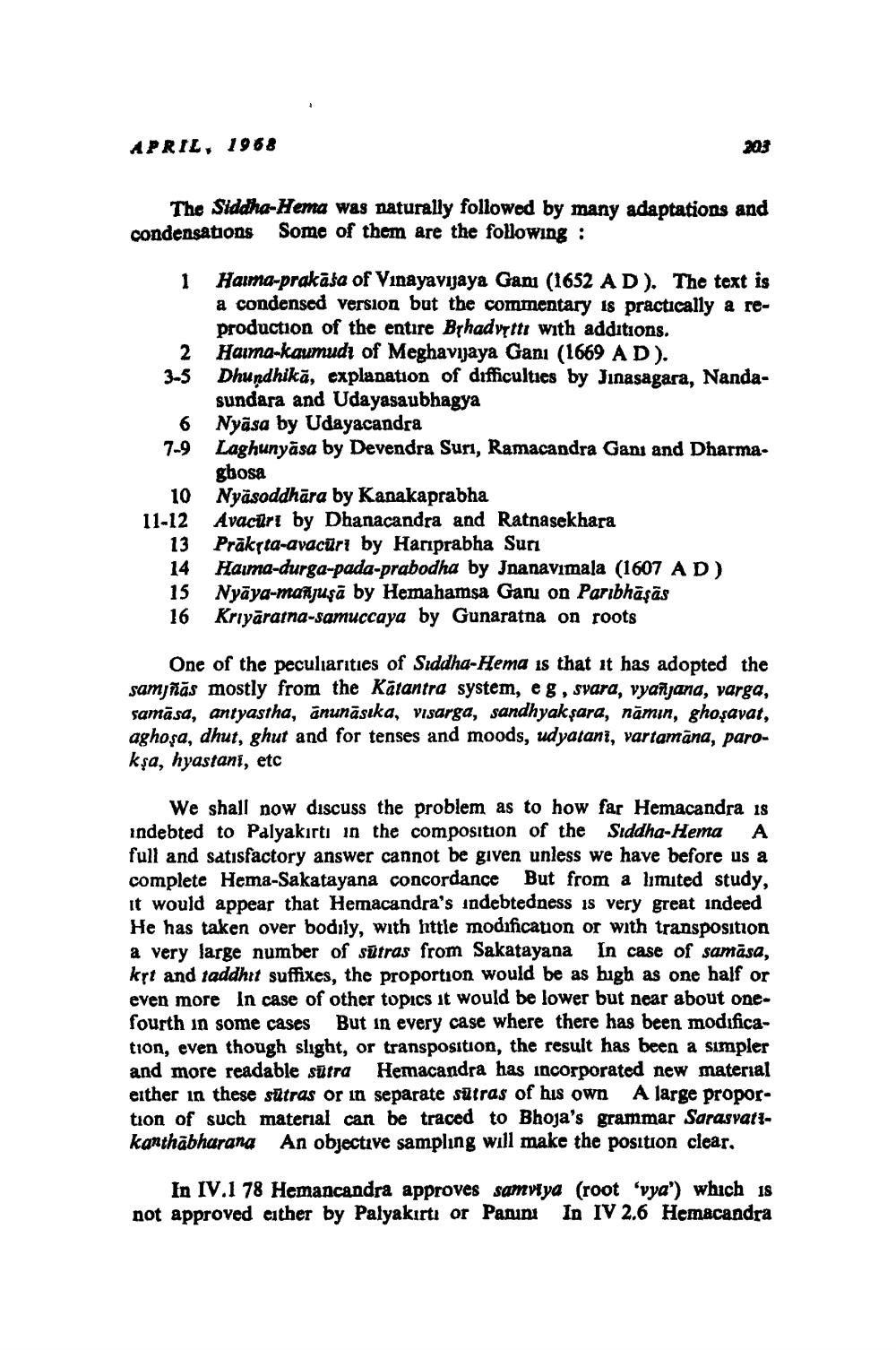________________
APRIL, 1968
203
The Siddha-Hema was naturally followed by many adaptations and condensations Some of them are the following:
3-5
1 Harma-prakāta of Vinayavijaya Gami (1652 AD). The text is
a condensed version but the commentary is practically a reproduction of the entire Brhadyytti with additions. Haima-kaumudi of Meghavijaya Ganı (1669 AD). Dhundhikā, explanation of difficulties by Jinasagara, Nandasundara and Udayasaubhagya
Nyasa by Udayacandra 9 Laghunyāsa by Devendra Suri, Ramacandra Gani and Dharma
gbosa 10 Nyāsoddhāra by Kanakaprabha 11-12 Avacuiri by Dhanacandra and Ratnasekhara
13 Prākrta-avacūri by Hariprabha Suri 14 Haima-durga-pada-prabodha by Jnanavimala (1607 AD) 15 Nyāya-manjuşă by Hemahamsa Gani on Parıbhāsās 16 Kriyararna-samuccaya by Gunaratna on roots
One of the peculiarities of Siddha-Hema is that it has adopted the samjñās mostly from the Katantra system, eg, svara, vyanjana, varga, samāsa, antyastha, anunāsika, visarga, sandhyakşara, namin, ghoşavat, aghoșa, dhut, ghut and for tenses and moods, udyatani, vartamāna, parokşa, hyastani, etc
We shall now discuss the problem as to how far Hemacandra is indebted to Palyakırtı in the composition of the Siddha-Hema A full and satisfactory answer cannot be given unless we have before us a complete Hema-Sakatayana concordance But from a limited study, It would appear that Hemacandra's indebtedness is very great indeed He has taken over bodily, with httle modification or with transposition a very large number of sūtras from Sakatayana In case of samāsa, kļt and taddhrt suffixes, the proportion would be as high as one half or even more In case of other topics it would be lower but near about one. fourth in some cases But in every case where there has been modification, even though slight, or transposition, the result has been a simpler and more readable sutra Hemacandra has incorporated new material erther in these sutras or in separate sutras of his own A large proportion of such material can be traced to Bhoja's grammar Sarasvatikanthabharana An objective sampling will make the position clear.
In IV.1 78 Hemancandra approves samviya (root 'vya") which is not approved either by Palyakırtı or Panini In IV 2.6 Hemacandra




